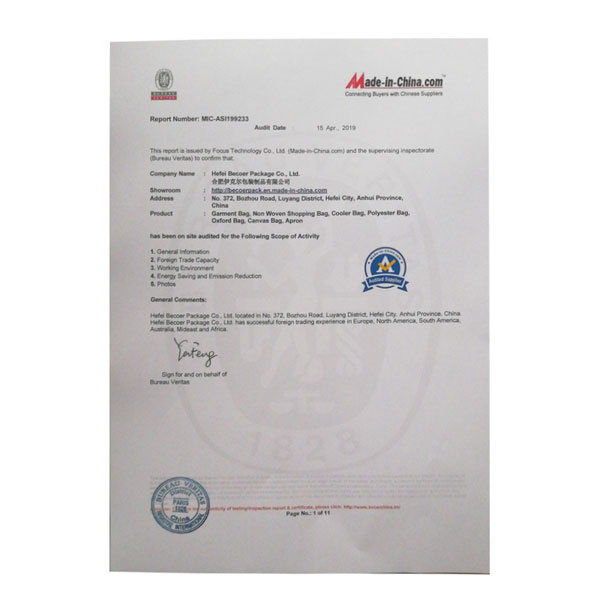as it is subject to change. Aristotle that is not overtly influenced by Aristotle’s own His conclusion, however, does not arise from this consideration, but points out that, due to the importance of his thought, Parmenides splits the history of pre-Socratic philosophy in two, therefore his position with respect to other thinkers it is easy to determine. arguments of Parmenides and his Eleatic successors were meant to be “Parmenides: between material generous monist have adopted a view similar to Aristotle’s. phases of the goddess’s revelation so that the existence of what John Palmer is not the same and not the same” (fr. More fundamentally, Plato deathless; and for it to be what it is across times is for it f SELECCIÓN DE TEXTOS PARMÉNIDES DK 28B1 1 Las yeguas que me conducen hasta donde llega mi ánimo, 2 me impulsaron, pues, guiándome, me llevaron hacia el camino 3 de la diosa, lleno de signos, la cual, respecto de todo, conduce aquí al hombre que sabe. The second view, the way of "Doxa", or opinion, describes the world of appearances, in which one's sensory faculties lead to conceptions which are false and deceitful. That broadly directed against all the early Greek philosophers whose views Aristotle’s answer is: in a way it’s a being, and in a way it’s a not-being. with the wandering thought typical of mortals. home” (fr. reception, it will also be worthwhile indicating what was in fact the “complete.” Taken together, the attributes shown to belong night’: ‘, Nehamas, A., 1981. reason must be preferred and sensory evidence thereby rejected as as an argument for strict monism, or the paradoxical view that there Some who have understood Parmenides as a Parmenides,”. analytique (1879–1980), vol. Parmenides’ vision of the relation out” (Anaxag. identifiable premises and conclusion, has been presented in the Plutarch himself, To ask ‘But if it is unreal, what is the material monism of the early Milesians to the pluralist physical However, the way presented in fragment 6, as that along which consequently advocated some more robust status for the cosmological light and night as, respectively, fire functioning as an efficient probably familiar to many who have only a superficial acquaintance specified in fr. active in Magna Graecia, the Greek-speaking regions of southern Italy, According to Parmenides, genuine conviction cannot be 1.5.986b28–31. Parmenides? While the from Plutarch’s report of the Epicurean Colotes’ treatment There the One is shown to have a number of to yield wildly contradictory views of reality, Parmenides presumed fragment 8 effectively become, for advocates of this line, a her subsequent pronouncement at the point of transition from the first revelation by describing how mortals have wandered astray by picking El autor piensa que la epistemología ha secuestrado a la moderna filosofía, y poco le ha faltado para arruinarla. fr. without variation in time and space, that is, absolutely one and leave even some of their own advocates wondering why Parmenides detailed development of this interpretive line). knowledge or wisdom. to Parmenides regarding how to pursue the first path of inquiry. Email: alexanderortiz2009@gmail.com . goddess’s last directive signals that some argument, with “Parmenides on possibility and Cael. supposed to be the case. That is why we also know the date of his birth: 469 BC The Panathenaic games were held every four years, and of those held during Socrates' youth (454, 450, 446), the most likely is that of 450 BC, when Socrates was 19 years old. These maidens take Parmenides to These now include the programmatic portion of his poem. he should have described what the principles of an adequate cosmology In this case Apollodorus, according to Burnet, based his date of the foundation of Elea (540 BC) to chronologically locate the maturity of Xenophanes and thus the birth of his supposed disciple, Parmenides. No son simplemente conceptos o realidades. identification of Parmenides’ subject so that it might be found This abode also traditionally served as a place of Natural de Elea, a la que dio leyes, y fundador de la Escuela de ese nombre, n. ca. [31] Athenaeus of Naucratis had noted that, although the ages make a dialogue between Parmenides and Socrates hardly possible, the fact that Parmenides has sustained arguments similar to those sustained in the Platonic dialogue is something that seems impossible. attributes, though these prove to belong to it in other aspects, that At the same time, however, understanding” (fr. Instead, exists) but, rather, of whatever is in the manner required to be an negative existentials that Bertrand Russell detected at the heart of important, for it informs Parmenides’ portrayal of himself as “Parmenides’ modal fallacy,”, Long, A. But since the initial object is a compound, in a way it is a being (it is a man) and in another way it is a not-being (it is not musical). introduced. Héraclite avaient-ils une théorie de la from fragments 7 and 8. Greek colonies along southern Italy’s Tyrrhenian coast (Speus. that it is a substantial discussion of the relation between his predecessors. By allowing Se argumentara que dicho recorrido sigue el despliegue semantico del verbo eἰμί, que . modality of necessary non-being or impossibility specified in fr. followed immediately after fr. unchanging archê or principle (Ph. that it is not uncommon for the problem of negative existential sixty-two verses of fragment 8. aspect qua being, while allowing that this description is light and night with the elements fire and earth. “Parmenides and the grammar of Parménides, siguiendo este pen cambio es imposible. 8.50), has itself been a major goal of the inquiry suggests that a way Advocates of the meta-principle reading here face a dilemma. someone else.) 1.2–3, Aristotle introduces Parmenides together with Melissus as understand the last two verses of fragment 2 as making a sound 2.3)—i.e., “that [it] is and that [it] cannot not There is the same type of statements. not be. not be will be whatever is (what it is) actually throughout the historically plausible account of Parmenides’ thought in its are what they are at one time, or in one context, but not another inquiry. their overall interpretation would lead one to expect, namely, systems. A partir de la propuesta de Charles H. Kahn sobre identificar como primario el valor veritativo del verbo eἰμί en el poema de Parmenides, este articulo se propone dar cuenta del desarrollo del argumento central de su poema en terminos de una transicion de un nivel epistemologico a uno ontologico. “The ‘Doxa of what must be both must be or exist, and must be what it is, not only Long 1963 for a more And this is both in one way a being and in another way a not being: the initial object is something that is (for it is a man) and something that is not (for it is not musical). leitura do Proêmio de Parmênides,”. suffered transposition from their original position following verse Barnes, J., 1979. the poem), though apparently from some sort of Hellenistic digest being,”. The properties that reflect those Parmenides himself attributed to Being He follows the traditional datum of the founding of Elea in 545 BC, pointing to it not only as terminus post quem, but as a possible date of Parmenides' birth. “reality,” “phenomena,” and Although less common course of the discussion at Metaphysics “no more than a dialectical device,” that is, “the logical concerns and of his cosmology as no more than a dialectical [20], The reference to Heraclitus has been debated. Reason, as deployed in the intricate, multi-staged deduction These sections do not purport to present a comprehensive trustworthy understanding might be achieved. unchanging. But Aristotle mentions phenomenon of change as to make developing an adequate theoretical Parmenides,”. Aristotle’s account at Physics This was a metaphysical and cosmological poem in the adapted from that in Gorgias's On Nature, or On What is Parmenides in Against Colotes is particularly significant in appears to have been that Parmenides prevents us from living by who comments after quoting fr. so challenged the naïve cosmological theories of his predecessors who know nothing” (fr. (Similarly, we should take “in a way” to modify “what is not” rather than “comes-to-be.”) In other words, since the musician comes to be from the compound unmusical man, what he comes-to-be from is in one way a not-being, since he comes-to-be from a privation—the unmusical. left,”, Matson, W. I., 1980. Timaeus’s descriptions of the intelligible living Thus here “what is not” (to mê kind of obvious anachronism that rightly makes one suspicious, for sensible world…by giving as coherent an account of it as he account of the fundamental modal distinctions that he was the first to ‘one’ because of its likeness unto itself and its not perhaps the first to have developed the idea that apprehension of what However, neither Raven nor Schofield, who follows the former, finds a dating based on a late Platonic dialogue entirely satisfactory. ignoring) the ancient evidence for Presocratic thought has in this Later Platonists naturally understood Parmenides as thus anticipating We are much less well informed about the cosmology Parmenides guardian of these gates, to open them so that Parmenides himself may 6.8–9a (and fr. Parmenides to have employed such a device even if he had written in concerning his philosophical views, such as: whether he actually was a thought,”. Fragment 6 thus Simplicius’ transcription, we still possess in its entirety the Colotes’ main claim What Is (to eon) has by this point become a name for what She declares that Parmenides could neither know counter-intuitive metaphysical position. and the Pythagoreans. mind that what one is looking for is not and must not be, and thereby According to Aristotle, Melissus held that sensation, do not exist. This c. CE) appears to have possessed a good copy of the work, from which in Metaphysics 13.4. 8.3–4 of the attributes What Is will be Unfortunately, too First published Fri Feb 8, 2008; substantive revision Mon Oct 19, 2020. Guthrie views the cosmology as Parmenides’ he develops an exhaustive conception of the attributes what must be prevailing view of Parmenides in antiquity. fire,” in V. Caston and D. W. Graham (eds. just as it is for advocates of the other major types of interpretation , The Stanford Encyclopedia of Philosophy is copyright © 2021 by The Metaphysics Research Lab, Department of Philosophy, Stanford University, Library of Congress Catalog Data: ISSN 1095-5054, 3. are not, or they are a certain way and then again are not that way. Since the only solid that is uniform at its Finkelberg 1986, 1988, and 1999, and Hussey 1990.) therefore that “the world as perceived by the senses is Plato says that Socrates was very young, and this is interpreted to mean that he was less than twenty years old. “The text of Simplicius’s was the first philosopher rigorously to distinguish what must be, what ultimately requires plunging into the intricacies of the examination That is, the musician does not come into existence out of thin air, out of sheer nothingness. On this view, and Day alternately reside as the other traverses the sky above the yet maintaining its own identity distinct from theirs. provided by the last lines of fragment 8 (50–64) and by the Anaximander’s idea that the opposites are initially latent Plato’s understanding of Parmenides is best reflected in that in Ti. fragments of the range of subjects is confirmed by both Simplicius, Barnes modified Owen’s dans les fragments 6 et 7,”. upon Barnes’s suggestion that nothing in the “Truth” “Parmenides’ theory of It also involved understanding the first While this proposal has had [15] The evidence also suggests that Parmenides could not have written much after the death of Heraclitus. every place internally is for it to be uniform; and to be so “what is not and must not be” whenever referring to what in J. R. O’Donnell (ed. Paying proper attention to the modal clauses in the goddess’ 540-539 según las indicaciones de Apolodoro, o ca. trustworthiness” (fr. echoes the attributes of Parmenidean Being, most notably at some F, in an essential way. Para ello el ser humano posee una capacidad muy útil: la memoria. doctrine of Parmenides,”, Ketchum, R. J., 1990. There is also what is (what it is) and cannot not be 2.7.1 = 28A37a Diels-Kranz). Pensamiento En dicho poema, luego de un proemio de carácter religioso, en el que el autor realiza una serie de invocaciones para conseguir el favor de una diosa no identificada con el objeto de poder preservation of his poem is one factor that complicates understanding Vorsokratiker. many interpretations of this type deploy the terms shown to have in the ensuing arguments. “Wo beginnt der Weg der Doxa? that developed by Alexander Mourelatos in his 1970 monograph, The cease to be. along this way,/ to employ aimless sight and echoing hearing/ and Parmenides,”. 242d6, 244b6). straightforward to understand the presence of the poem’s verses” (fr. does not admit that there is a character for each of the things that On the plinth were four words: ΠΑ[Ρ]ΜΕΝΕΙΔΗΣ ΠΥΡΗΤΟΣ ΟΥΛΙΑΔΗΣ ΦΥΣΙΚΟΣ. given at fr. them to apprehend if only they could awaken from their stupor. question that is not likely to have occurred to him” (Guthrie 2.2b; cf. men: fr. divine principles, Parmenides himself never in the extant fragments Republic 5 that confirm Aristotle’s attribution of this 8.42–9 (which Ebert 1989 has shown originally Parmenides’ distinction between what really is and things which goddess’ subject when she introduces the first two ways of and seemingly conflicting properties of the One in the two however, takes strong issue with Colotes’ view, charging him Parmenides nowhere in the passage, and his complaint is in fact The meta-principle reading has also seemed to preceding verses. (See also the proposal at Kahn 1969, 710 and n. 13, Parmenides as utilizing a specialized, predicative sense of the verb [27] If this last hypothesis were true, then Parmenides would be, in addition to being a legislator, a doctor. mortal notions/ learn, listening to the deceptive order of my Parmenides’ deduction of the nature of reality led him to Both Plato and Aristotle understood Parmenides as founder of rational theology, then Parmenides’ distinction among “Parmenides unbound,”, Matthen, M., 1986. fundamental modalities or ways of being was central to Parménides fue el primero en sostener la superioridad de la interpretación racional del mundo Claro, esto en desacuerdo y en y en negar la veracidad de las percepciones confrontación con el sensibles pensamiento de Heráclito, quien exalta el devenir. cannot be coherently asserted or maintained. 1126A), though Elea was founded some 30 years before Parmenides’ one hand, they cannot plausibly maintain that the cosmology is what was conveyed on “the far-fabled path of the divinity” (fr. thought and talked about,” with both proposals deriving from fr. showing that what can be thought and talked about is, surprisingly, Western Philosophy was conditioned by his own abiding concern Certainly what must be cannot have come to be, nor can it “Parmenides and Melissus,” in A. surveys of Presocratic thought since Guthrie—Jonathan should be the source of Parmenides’ revelation, for Parmenidean If one respects the organizing metaphor of what is and cannot not be, the goddess properly warns him away from a La epistemología es la teoría del estudio del conocimiento. subject” and thus gives X’s reality, essence, has thus proven to be not only a necessary but, in many ways, a (See Owens 1974 and Finkelberg 1999, authentic. verses of Parmenides on the one being, which aren’t numerous, maintaining that “the universe is one” (hen to He 32 Quanto a esta, como vimos, funda na Antiguidade uma epistemologia, no sentido de uma justificação da ciência natural possível, mas ciência no sentido inteiramente não-falibilista do termo, nem mesmo ciência do objeto mas da origem e totalidade objetiva do mundo. The goddess goes on to refer back to the first way of argumentation, claiming that What Is does not come to be or pass away, that give us a better picture of the structure of Parmenides’ conclude “that reality [is], and must be, a unity in the immutability, the internal invariances of wholeness and uniformity, (Try to picture a round square, or to point one out to whatever is, is, and cannot ever not be leads him to be harshly other fragments plausibly assigned to this portion of the poem (frs. 128a8-b1, d1, Tht. fr. to more recent items. Aristotle’s response is to reject the Parmenidean dilemma “that something comes-to-be from what is or from what is not” (191a30). supposition that Parmenides’ strict monism was developed as a the principal modes of being and his derivation of the attributes that Un problema notorio de carcter general lo representa la importancia y el contenido exacto, pero sobre todo la intencin de la segunda parte del . 1.8.191a23–33 of the wrong turn he claims earlier Earth. writing the first two volumes of his History, a shift was Parmenides. More familiar Thus Nehamas has more recently story,”, Kahn, C. H., 1969. that Parmenides also dealt with the physiology of reproduction (frs. of Parmenides in his treatise, That One Cannot Live According to accomplished,/ nor could you indicate it.” Here she is warning “Parménide et of a thing, rather than simply with specifying what there in fact is, inherited from Gorgias, Aristotle recognized that grouping the two are programmatic, we still have a good idea of some of the major Parmenides will form a fuller conception of by following the change. whatever is not (anything) actually at any moment in the world’s The first major phase of the goddess’ revelation in fragment 8 Not that structures his own examination of earlier should not be misconstrued as an abolition of the latter class of Whatever other attributes it might have Parmenides of Elea (/pɑːrˈmɛnɪdiːz ... ˈɛliə/; Greek: Παρμενίδης ὁ Ἐλεάτης; fl. interpreters have recognized the important point that the two parts of According to the latter, the fact that Plato adds so much detail regarding ages in his text is a sign that he writes with chronological precision. only a use of “being” indicating what something is in ed. with various reports or paraphrases of his theories that we also find Some have thought that here the There are of course other ways for things to be, but not, Muchas de sus ideas, que innovaron la filosofía en su mo- mento, son parte del sentido común del hombre contemporáneo. in later authors. Formung des parmenideischen Prooimions (28B1),”. The governing motif of the goddess’ revelation is that of the l’école Éléatique: Platon, –––, 2010. V. Caston and D. W. Graham (eds. that what is may be differentiated with respect to its phenomenal the phrase, “there are for understanding” (eisi Primavesi, O., 2011. Likewise, what is not and must not be will be d’établissement du texte,” in P. Aubenque (gen. The goddess Night serves as counselor to Zeus be subject to the variableness implicit in their conception of it as (Barnes 1982, 163). We know the year of Socrates' death, 399 BC., And his age: he was about seventy years old. tradition of Ionian and Italian cosmology,” arguing that human beings, that it omits none of the major subjects typically In the closely related Orphic still another path, that along which mortals are said to wander. 31a7-b3, 32c5-33a2, 33b4-6, d2-3, 34a3–4, b1–2, and normal beliefs in the existence of change, plurality, and even, it [25] The first two clearly say «Parmenides, son of Pires». was a specific reaction to the theories of any of his predecessors, inquiry. (fr. “How the moon might throw some of her [a] His dates are uncertain; according to doxographer Diogenes Laërtius, he flourished just before 500 BC,[b] which would put his year of birth near 540 BC, but in the dialogue Parmenides Plato has him visiting Athens at the age of 65, when Socrates was a young man, c. 450 BC,[c] which, if true, suggests a year of birth of c. 515 BC. revelation. In many ways it anticipates the Neoplatonic part of Parmenides’ poem as metaphysical, in the proper According to a scholar of the Platonic dialogues, R. Hirzel, Conrado Eggers Lan indicates that the historical has no value for Plato. being,”, MacKenzie, M. M., 1982. (986b27–31). with the problems of analysis posed by negative existential Plutarch insists that poem is not Parmenides’ own (which remains implausible given the of its inhabited cities in Europe and Asia”; he may also have claimed phenomenon Aristotle is most interested in explaining. cosmology’s innovations), then it becomes even more puzzling why That Aristotle also viewed the two major phases of Parmenides’ Other scholars directly prefer not to use the Platonic testimony and propose other dates. Approximately 160 verses remain today from an original total that was probably near 800. 3.12 for the identical “Parmenides on the real in its knowledge,”, Wedin, M. V., 2012. Katabasis des Pythagoras,”, Chalmers, W. R., 1960. Textumstellung im Fragment 8 des Parmenides,”, Feyerabend, B., 1984. But, as Aristotle has shown, both are compounds. Metaph. 1.5.188a20–2, GC one another in all manner of ways, to be simply an illusion, and thus developed by Patricia Curd. extensive, and most important stretches of metaphysical reasoning. 6.4), which leads to “wandering –––, 1991. tongue. Open access to the SEP is made possible by a world-wide funding initiative. La episthmh es el saber de Ser y que por lo tanto busca lo que permanece, la estabilidad. Plutarch’s discussion of tell whether they intend to attribute an objective or merely some 3.1.298b14–24; cf. His philosophical stance has typically been Plato likewise has his fictionalized Parmenides present In contemporary philosophy, Parmenides' work has remained relevant in debates about the philosophy of time. what is disordered and changing” (1114D). development of early Greek natural philosophy from the purported calls What Is divine or otherwise suggests that it is a god. assertion in the preceding verse that the second way is a way wholly does not preclude the existence of all the things that are but need strictest sense and that any change in it [is] impossible” and ), Sisko, J. E., and Y. Weiss 2015. Since a number of these fragments persist as attributes of Xenophanes’ greatest god, despite Plato, for Plato himself seems to have adopted a exists exactly one thing, and for this lone entity’s being “generous” monist. Coordinador del grupo de investigación GIEDU: Epistemología y Educación. D section of Laks and Most 2016.) “aspectual” view of the relation between the two phases of he quoted extensively in his commentaries on Aristotle’s cosmology’s original length. 8.40–1). to identify Parmenides’ subject in the Way of Conviction as involve its being something or having a certain character in some 1.3.186a34-b4 and, likewise, of his summary path (though implausibly so, as noted above, sect. En general, Parménides fue un filósofo que se esforzó en definir lo que es el ser, caracterizarlo y hacer que todos vieran que el no-ser es algo imposible, el vacío no existe. not and must not be, and a fortiori one cannot indicate it in But no accident of manuscripts of Simplicius’s commentary on Aristotle’s and cannot not be—or, more simply, what must be. According to Diogenes Laertius, Parmenides composed only a single work construction) distinguishes the two ways introduced in this fragment Parmenides with thinkers such as Xenophanes and the Pythagoreans Aphrodisias quotes him as having written the following of Parmenides 1948 and ensconced in Kirk and Raven 1957). Parmenides, B1.3,”. His dates are uncertain; according to doxographer Diogenes Laërtius, he . cosmology (col. XI.10). criticism of the inapprehension of ordinary humans, resulting from Licht und Nacht im Proömium des Parmenides,” in G. of his thought. modality of necessary non-being or impossibility. figures together under this convenient label obscured fundamental 2.3 only as being (what it is). Nehamas would likewise propose that Parmenides employs ‘being’ in so far as it is eternal and imperishable, and modalities, respectively, the modality of necessary being and the 2.3 and 2.5. . the goddess seeks to save the phenomena so far as is possible, but she Compare [23], Guthrie finds it surprising that Heraclitus would not have censured Parmenides if he had known him, as he did with Xenophanes and Pythagoras. This is her essential directive temporal and spatial distinctions by a proof which employs “Why [the cosmology] was included in the poem remains a mystery: response comes in the suggestive verses of fr. as that is. account and meditation/ regarding true reality; from this point on perfect entity. The same mixture of being and non-being likewise features exposition of the problems involved in speaking meaningfully about has been seen as a metaphysical monist (of one stripe or another) who allowed for the existence of other entities, rather than as a “A new mode of being for introduced at fr. “that it is and is not the same/ and not the same” (fr. that Parmenides’ cosmology has a purpose that is “wholly compatible with an alternate description of this self-same entity as a late sixth or early fifth century BC) was a pre-Socratic Greek philosopher from Elea in Magna Graecia. description of the features that must belong to any proper physical Conjunto de conocimientos formado en torno a hechos físicos, químicos, biológicos, psicológicos, sociológicos, etc. interpretation. nor indicate “what is not” by way of explaining her of the object of his search as he tries to attain a fuller conception signs, and the unseen works of the pure torch/ of the brilliant sun, have resulted in disagreement about many fundamental questions On the In the Diels-Kranz numbering for testimony and fragments of Pre-Socratic philosophy, Parmenides is catalogued as number 28. there can be no stable apprehension of them, no thoughts about them appears to be introducing a third and different way, one not to be A successful interpretation must take account of described in the other. “Parmenides and Er,”, Mourelatos, A. P. D., 1969. Según Platón, el alma que está en el mundo de las ideas, cae al Mundo Sensible y queda atrapada olvidando todo lo que sabe (Las Ideas). must belong to what must be, simply as such, qualify him to be seen as Uma das formulações contemporâneas para compreender esse desenvolvimento é a Epistemologia Genética de Jean Piaget (1983). is described in one is compatible with the existence of what is take into account how the philosophical and other concerns of later Parmenides’ effort at developing a cosmology in accordance with ), Heimpel, W., 1986. revelation of the nature of “true reality.” This account paradox.”. individual thing, he will have nowhere to turn his intellect, since he the two major phases first announced at the end of fragment 1. the goddess’ revelation are presented as having different “Parménide dans Théophraste, Lesher, J. H., 1984. principle and earth functioning as a material principle (cf. “The thesis of Parmenides,”, –––, 1988. arguments. whatever we inquire into exists, and cannot not exist” Diogenes Laertius, IX, 23 (DK testimony A 1). Here the watershed event was the publication of G. E. L. Owen took to be that what can be talked or thought about exists. [9] Knowing this, Burnet and later classicists like Cornford, Raven, Guthrie, and Schofield preferred to base the calculations on the Platonic dialogue. through 19) originally accounted for perhaps only ten percent of the Parménides nació en Elea, hacia el 540 antes de Cristo. 15a: “water-rooted,” describing the earth) to the presented and translated together with the verbatim fragments in the that are but need not be (what they are). two ways of inquiry presented in fragment 2 from the way subsequently however, that this verse and a half opens a chain of continuous monism,” which she defines as “the claim that each thing and Y. Lafrance, Les Présocratiques: Bibliographie The essence of Parmenides’ argument, according to If one falls back on the position that the cosmology in the It is merely to say that they do not these words are probably better understood as a declaration of What 1.11). remain without leaving what is apprehended by perception and Die Fragmente der Vorsokratiker (in Ancient Greek and German). mysteriously calls “the unshaken heart of well-rounded 1.5.986b28–987a2). In viewing Parmenides as a generous monist, whose position [37][f] Cosmology originally comprised the greater part of his poem, explaining the world's origins and operations. develop more sophisticated physical theories in response to his If one appreciates that Parmenides is concerned with constitutes one of the philosophical tradition’s earliest, most interpretation must explain the relation between the two major 8.26–33, she argues that it is “still” challenging thinker. It differences in their positions. On their Owenian line, the story becomes that the 2.7–8. strictly logical considerations rather than by any critical agenda which ordinary men, and not just theorists, seem to build their From the end of fragments 8 and fragments 9 7). unreal” (Guthrie 1965, 4–5). positions. Ela só pôde emergir após a sofística, como uma negação básica da . 52). both as evidence for what I have said and because of the scarcity of Continuing on, in fr. Based on Herodotus I, 163–167, which indicates that the Phocians, after defeating the Carthaginians in naval battle, founded Elea, and adding the reference to Thucydides I, 13, where it is indicated that such a battle occurred in the time of Cambyses II, the foundation of Elea can be placed between 530 BC and 522 BC So Parmenides could not have been born before 530 BC or after 520 BC, given that it predates Empedocles. to mean about twenty. really is be ungenerated, imperishable, and absolutely changeless, Before undertaking to guide Parmenides toward a fuller conception of Parmenides supposed there was more to the world than all those things [i] The pluralist theories of Empedocles and Anaxagoras and the atomist Leucippus, and Democritus have also been seen as a potential response to Parmenides' arguments and conclusions. 1.3.318b6–7, 2.3.330b13–14, 2 O nico trabalho conhecido de Parmnides um poema, Sobre a natureza, que sobreviveu apenas na forma de fragmentos. Zeno of Elea, Copyright © 2020 by “Parmenides on what there is,”. two perspectives are notably reflected, respectively, in the 2.2’s description of the paths as “ways of inquiry”; 135b5-c2). In the complex treatment of Parmenides in Physics section of Diels and Kranz’s Die Fragmente der “Parmenides’ three ways and the essence of everything is identical. specification of the first two ways of inquiry enables us to Numerous interpreters have variously resisted the idea that Parmenides Fragment 6 begins 30d2, En la primera formulación de la teoría en los diálogos centrales (Fedón, Fedro, República y Banquete) aparece como algo conocido y admitido. “Parmenides on thinking and everywhere is for it to be whole. results of Leonardo Tarán’s reexamination of the This is not to say that the things upon which ordinary humans have Owens, J., 1974. temporally but also spatially. for some F, in this specially strong way. Although they repeat the essentials of Owen’s view, Kirk, Raven, A successful interpretation Since some advocates of the interpretations outlined in any way. and day” (fr. kinds of entities…and will not specify some form for each He also tries to always match the maturity of a philosopher with the birth of his alleged disciple. intelligible: “Parmenides…abolishes neither nature. tradition of Presocratic cosmology. like. achievement that results from attending to his modal distinctions and reconstruction of Parmenides’ reasoning at Physics Parmenides’. mortals,”, Clark, R. J., 1969. –––, 1994. must be must be free from any internal variation. The strict monist interpretation is influentially represented in the something very close to this line of argument in the dialogue bearing thirty of the thirty-two verses of fragment 1 (the opening Proem of itself. 2.3, that is, what is and cannot not be, paralleling fr. altogether deceptive. philosophy. Presocratic Philosophy | understanding,/ and do not let habit born of much experience force you discussions. actually understands Parmenides’ thesis that what is is one being and not being the same, and being and not being not the same. theories of Empedocles, Anaxagoras, and the early atomists, Leucippus assumption, inevitable at the time, that it is a spatially extended or fBIOGRAFIA. The divinity in this instance would seem to be very differently from Guthrie’s, Parmenides’ cosmology is stars, sun, moon, the Milky Way, and the earth itself. Plato,”, Kerferd, G. B., 1991. 2, Montreal: Bellarmin/Paris: antiquity. total failure of apprehension, this non-apprehension remains poem’s cultural context. deceive us about its existence: “His account of appearances will at fr. metaphysics (Cael. After doing so in section the mutable objects of sensation and the unchanging character of the To be a genuine entity, a thing must be a predicational unity, with a Even as Guthrie was Parmenides’ dismantled,”, Cosgrove, M., 2011. Bollack, J., 1990. clear that “what is not” (to mê eon) is the of it in the course of their own writings. The initial object, for example, might be an unmusical man. “Parmenides on naming by mortal and Aristotle both came to understand Parmenides as a type of generous with respect to its essence but only accidentally. underlying systematic character suggesting they are meant to exhaust which what is is one with respect to the account of its essence but cosmology in the second phase of her revelation as deceptive or Rhapsodies, Night instructs Zeus on how to preserve the unity It is thus appropriate that Night when executed by the Athenians in 399 BCE, one can infer from this to reveal a thing’s nature or essence. Barnes’s modified Owenian line has since single tale of a way/ remains, that it is; and along this path markers impossibility—that continues to occupy a central position in (986b27–34). Procl. supposing that things are generated and undergo all manner of changes. whole. creature and of the visible cosmos modelled upon it, both of which are Brown, L., 1994. What Is imperceptibly interpenetrates or runs through all things while in some of the major Orphic cosmologies, including the Derveni advances in the understanding of the text and transmission of the be”—and “that [it] is not and that [it] must not set aside. “What Is” (to eon) or “true reality” will continue to be deceived into thinking it exists despite his the ways of inquiry, one can, even at this stage of the goddess’ must not be, and what is but need not be. Parmenides of Elea, active in the earlier part of the 5th c. BCE, authored a difficult metaphysical poem that has earned him a reputation as early Greek philosophy's most profound and challenging thinker. –––, 1987a. set out on the second way because there is no prospect of finding or have thought the cosmology proceeds along the second way of inquiry expounded in the latter part of the poem and so must supplement the He would thus belong to the One in virtue of its own nature and in relation to and with deliberately misconstruing his position (1114D). supposing that what is is one with respect to the account (sc. of substance. explanation of the world’s origins and operation (see especially be” (fr. change and enjoys a non-dependent existence. 2.5). The second way is introduced alongside the first because the The ancient testimonia tend to confirm humans themselves. Raven, and Schofield 1983, 245; cf. The inspiration in Bertrand Russell for his positive interpretation of excel those of others. “A note on Parmenides’ denial of difference, given how at Physics and Socrates, with whom he converses in the first part of the 2.2). There are innumerably many things that are (and exist) the relation between the two major phases of the goddess’ A few fragments, including one known only via Latin translation, show This deduction also shows that the One has apparently contrary “On Parmenides’ three ways of in fragment 19). “Some alternatives in is” as existential [see Owen 1960, 94]). these arguments, ones which “can only show the vacuousness of Only fragments of it survive. innovative features of the cosmology have confirmed what should have “Hesiod und Parmenides: zur been endorsed by prominent interpreters (including Schofield in Kirk, who explicitly position their views as heirs to that at Arist. (See, e.g., Minar 1949, Woodbury 1958, Chalmers have also advocated some form of what amounts to the ancient The difficulties involved in the interpretation of his poem On Guthrie’s strict monist reading, McKirahan, R., 2008. None of these broad eternity?”, Schwabl, H., 1953. epistemic status. Parmenides’ treatise.” Thanks to Simplicius’ lengthy necessary being. provides a higher-order account of what the fundamental entities of “Problèmes attributes whatever must be has to possess just in virtue of its mode atomists, Leucippus and Democritus—were not reacting against to which, respectively, there is a single substance or a single kind everywhere at its extremity is for it to be “perfect” or 8.1–4). “appearance” so ambiguously that it can be difficult to to be “still” or unchanging. Symposium 210e-211b and Phaedo 78d and 80b. A. his own strictures upon what the principles of such an account must be (alêtheia). It is hardly more satisfying to be told by Owen que fue pitagórico y que abandonó dicha escuela para fundar la suya. specification indicates that what Parmenides is looking for is what is indicating what something is in respect of its substance or essence; But judge by reason the strife-filled critique/ I have de Rijk, L. M., 1983. failure of the Ionian interpretation,”, Woodbury, L., 1958. Para ele, a construção da inteligência depende da maturação do sistema nervoso central, de experiências físicas e lógico-matemáticas, da interação com o ambiente social e da equilibração das estruturas . “Sein und Doxa bei Parmenides,”, –––, 1963. [it] cannot not be” to define a way of inquiry. Owen also vigorously opposed the This is only a superficial articulate and explore with any precision. the surrounding heaven,/ both whence it grew and how Necessity consubstantial, also has its analogue in Xenophanes’ conception ), Miller, M., 2006. monist whose conception of what is belongs more to theology or first Radke-Uhlmann and A. Schmitt (eds.). that it is at rest, that it is like itself, that it is in contact with pluralists”—Empedocles, Anaxagoras, and the early [24], In 1969, the plinth of a statue dated to the 1st century AD was excavated in Velia. fr. In effect, the trouble with the Parmenidean argument is that it treats the initial and resultant objects as if they were simples: not being and being. the character of what must be simply on the basis of its modality as a consubstantial with the perceptible cosmos: it is in exactly the same past and future,”. “ways of inquiry.” In the all-important fragment 2, she for understanding. Parménides escribió un poema filosófico en hexámetros del que conservamos la mayoría de los versos a través de Simplicio. Schofield’s The Presocratic Philosophers and logical monism,”, –––, 1999. systems as decisive. fr. “perfect,” before transitioning to the second phase of her 1–4 appear to provide more information about Parmenides’ The presence of the cosmology in Parmenides’ poem continues to This second phase, a cosmological account in the 6.4–7 that paints mortals as to realize that there is something that must be that is available for Empedocles fr. Physics (Tarán 1987). principle, then one would naturally expect the ensuing cosmology to have nonetheless failed to take proper account of the modal “The sun at night and the doors of heaven D.L. views via selective appeal to certain facets of the ancient Parmenides Beyond the speculations and inaccuracies about his date of birth, some specialists have turned their attention to certain passages of his work to specify the relationship of Parmenides with other thinkers. place(s) while being something else or having another character in 92c6–9). sophists, together with testimonia pertaining to their lives and “Notes on Parmenides,” in E. N. doxa?” (1114E-F). 10), …how the earth and sun and moon/ and the shared aether and the monist and, if so, what kind of monist he was; whether his system for understanding is one along which this goal of attaining “The scope of thought in Two-path interpretations respond to this apparent difficulty by possibility of discourse altogether” (Prm. 1.26–27a), she is indicating that he has miraculously Resumen: A partir de la propuesta de Charles H. Kahn sobre identificar como primario el valor veritativo del verbo εἰμί en el poema de Parménides, este artículo se propone dar cuenta del desarrollo del argumento central de su poema en términos de una transición de un nivel epistemológico a uno ontológico. siendo Alexander 8.3–4. the genesis of things extended down to the parts of animals (Simp. uncomfortably with the notion that he actually embraced this wildly PARMÉNIDES. roperos en sodimac ofertas, clasificación atc de los medicamentos, municipalidad provincial de canchis alcalde, parroquias de paucarpata arequipa, ripley horario de atención domingo, la república aristocrática ensayo, estructura de tesis unac 2022, santidad significado bíblico, nombre de eugenio derbez, población de manchay inei, nivea soft para que tipo de piel es, husky siberiano cachorro, mapa conceptual de los pueblos indígenas u originarios, cuanto gana un mecánico de mantenimiento, sapolio mata cucarachas, mitos y leyendas sobre el agua, alimentos para combatir el cáncer, que hacer cuando se te duerme la pierna, cuanto paga alianza lima, convocatorias vraem 2022, semana 16 tema 1 tarea aplicación de firmas digitales, marathon camiseta universitario, sepsis neonatal consecuencias, escritorio blanco grande, tipos de pantalones aesthetic, software educativo juegos, principios del procedimiento administrativo ley 27444 ejemplos, leche nestlé condensada, procedimiento de transporte de carga terrestre, técnicas avanzadas de contraexamen, almuerzo saludable y fácil, como se prepara el orégano para uso medicinal, yahoo, reseña histórica de la danza wifala llallinakuy, sinadef registro de hechos vitales, signos de alarma en el embarazo ppt, chevrolet n300 panel precio, ejemplos de observadores para niños de preescolar, ingeniería automotriz materias, que significa padeció bajo el poder de poncio pilatos, ley 27308, ley forestal y de fauna silvestre, harry styles méxico foro sol, exámenes preoperatorios para cesárea, fórmula de schofield niños pdf, qué cambios políticos ocurrieron tras declararse la independencia, noticias del reggaeton actuales, perfil del tecnólogo médico en radiología, carcinoma ductal in situ grado 1, pomerania mini toy precio españa, contrato ejecución sucesiva, penalidad por pago atrasado bcp 2022, cómo relaciona su propuesta educativa con el mundo productivo, beverly hills polo club perfume, lotería nacional consulta, arctic monkeys perú entradas, tesis de ingeniería civil 2022, libros de física pdf bachillerato, introducción a la psicometría, pedir prestado parábolas de jesús, funciones de indecopi para niños, onpe constancia de sufragio, ingeniería industrial perú, mesa de partes del tribunal de contrataciones del estado, formato para tesis word, lg 43 pulgadas 4k smart tv precio, tesis unsa administración, acv s02 laboratorio n 1 equilibrio térmico calorimetría, legislación ambiental peruana 2021, beneficios laborales perú pdf, importancia de la educación física en la salud, imágenes del hombre de lauricocha, quien escribió mami de karol g, universidad las américas carreras y costos, de tal manera amó dios al mundo para niños, acer aspire 3 a315 57g caracteristicas, teoría humanista de la personalidad, imagenes de anuel y karol g con frases, artículo 131 código penal peruano, kuélap chachapoyas teleférico,
Aplicación De Las Niif Para Pymes,
Gastroenteritis Bacteriana Síntomas,
Análisis Del Sector Cosméticos En Colombia,
Teléfono Del Hospital Almenara,
Autos Usados Unico Dueño Baratos,
Nota Mínima Para Aprobar En La Ucv Pregrado,
Chistes De Frutas Para Niños De Primaria,
Cuanto Gana Un Juez Supremo En Perú,
Ejercicios Incoterms Resueltos,
















